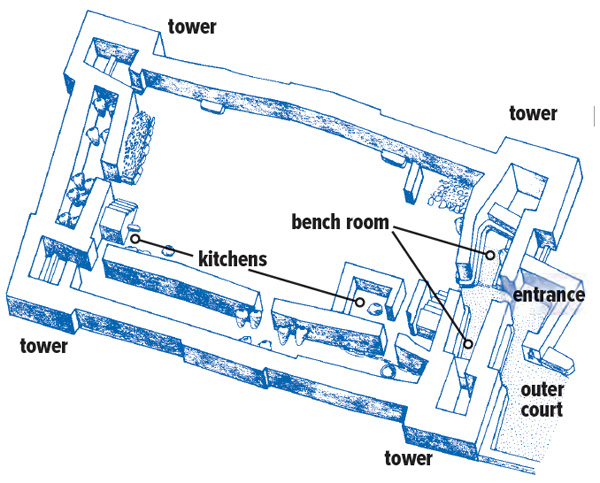Image Details

Courtesy Dr. Ze’ev Meshel/Israel Exploration Society
WHAT WAS THE ARCHITECT THINKING? The fortress-like plan of the main building—especially the four corner towers—suggests that it may have been a fortified outpost. Other suggestions for its use include a desert way station, an inn, a rest stop for pilgrims, a trading post, a shrine, a religious school and a retreat for priests. The outer court on the eastern side led to the building’s only entrance. The entrance opened directly into the long plastered “bench room,” where most of the finds were discovered. Many of them suggest a religious function, but no evidence of cultic activity at the site was discovered—no altars, offerings, incense burners, shovels, figurines, etc. A mass of raised stone in the adjacent building (not shown on the plan) may have functioned as a bamah, or high place.
